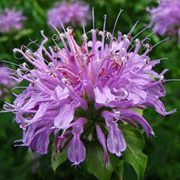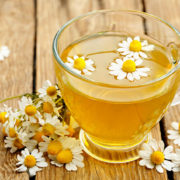Native Herbs for Cold & Flu Season
 Echinacea (echinacea spp.) Probably one of the most famous “cold & flu herbs”, echinacea does stimulate white blood cell production and can help with any sort of infection. But it truly excels at combating infections of the blood, septicemia, abcesses and poisoning. One of its main traditional Native American uses was to treat snake bites.There are dozesn of species of ehinacea, native to the Great Plains. If you are using Echinacea for help with a viral infection, it’s best to take it upfront at the first signs of illness, and in large doses. Once you’re officially sick, it would be better to try one of the other remedies below.
Echinacea (echinacea spp.) Probably one of the most famous “cold & flu herbs”, echinacea does stimulate white blood cell production and can help with any sort of infection. But it truly excels at combating infections of the blood, septicemia, abcesses and poisoning. One of its main traditional Native American uses was to treat snake bites.There are dozesn of species of ehinacea, native to the Great Plains. If you are using Echinacea for help with a viral infection, it’s best to take it upfront at the first signs of illness, and in large doses. Once you’re officially sick, it would be better to try one of the other remedies below. Osha: (lingusticum porteri). This medicinal root comes is native to the Rocky Mountains, belonging to a tall, feathery herb from the parsley family. Osha is warming, stimulating and strengthening to the adrenal cortex. It is anti-inflammatory (due to its influence over cortisol production), and is useful for adrenal burnout. Its warming, spicy quality promotes digestion, eases gas and helps to break up mucus and congestion in the GI tract. Similarly, it can support expectoration in the lungs and break up sinus congestion.
Osha: (lingusticum porteri). This medicinal root comes is native to the Rocky Mountains, belonging to a tall, feathery herb from the parsley family. Osha is warming, stimulating and strengthening to the adrenal cortex. It is anti-inflammatory (due to its influence over cortisol production), and is useful for adrenal burnout. Its warming, spicy quality promotes digestion, eases gas and helps to break up mucus and congestion in the GI tract. Similarly, it can support expectoration in the lungs and break up sinus congestion. Elder (sambucus canadensis) Elder is an incredible medicine chest, with all parts of the tree being useful. Sambucus canadensis is the North American species, and it is used interchangeably with the European Sambucus nigra. The flowers and berries are both diaphoretic, opening the pores, and bringing blood to the periphery. The flowers are more decongesting while the berries are more tonic and blood-building. Elder opens all hollow tubes in the body, including the pores, lungs, colon, kidneys and blood vessels, improving blood flow, perspiration and elimination. The berries have been shown to inhibit viral replication, making it a go-to for viral infections such as influenza. Taken regularly, it can both prevent and shorten the duration of the flu.
Elder (sambucus canadensis) Elder is an incredible medicine chest, with all parts of the tree being useful. Sambucus canadensis is the North American species, and it is used interchangeably with the European Sambucus nigra. The flowers and berries are both diaphoretic, opening the pores, and bringing blood to the periphery. The flowers are more decongesting while the berries are more tonic and blood-building. Elder opens all hollow tubes in the body, including the pores, lungs, colon, kidneys and blood vessels, improving blood flow, perspiration and elimination. The berries have been shown to inhibit viral replication, making it a go-to for viral infections such as influenza. Taken regularly, it can both prevent and shorten the duration of the flu. Wild Bergamot (Monarda fistulosa) Also known as sweet leaf and bee balm, this species of mint resembles European oregano. Like oregano, it is spicy and diffusive. It is a stimulating diaphoretic, supporting the body’s fever response, reducing internal heat by driving it to the surface. It is indicated when someone feels hot, but the skin is cool & clammy. It’s also an excellent remedy for burns when used topically. And internally it can be used to balance candida overgrowths.
Wild Bergamot (Monarda fistulosa) Also known as sweet leaf and bee balm, this species of mint resembles European oregano. Like oregano, it is spicy and diffusive. It is a stimulating diaphoretic, supporting the body’s fever response, reducing internal heat by driving it to the surface. It is indicated when someone feels hot, but the skin is cool & clammy. It’s also an excellent remedy for burns when used topically. And internally it can be used to balance candida overgrowths.**This information is for educational purposes only and is not intended to diagnose or treat any disease**





